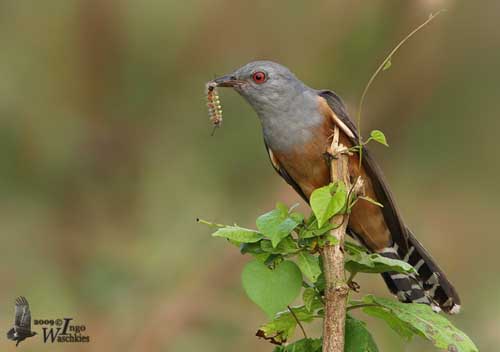
Photographers :
José Luis Beamonte
Pájaros de España
Jean Michel Fenerole
Photos d’Oiseaux du monde
Paul Guillet
Photos d’Oiseaux
Patrick Ingremeau
TAMANDUA
Ingo Waschkies
Bird Photography
Nicole Bouglouan
PHOTOGRAPHIC RAMBLE
Text by Nicole Bouglouan
Sources :
HANDBOOK OF THE BIRDS OF THE WORLD vol 4 by Josep del Hoyo-Andrew Elliott-Jordi Sargatal - Lynx Edicions - ISBN: 8487334229
L’ENCYCLOPEDIE MONDIALE DES OISEAUX - Dr Christopher M. Perrins - BORDAS - ISBN: 2040185607
CREAGUS@Monterey Bay (Don Roberson)
Wikipedia, the free encyclopaedia
CUCULIDAE FAMILY
Subfamily Cuculinae
The subfamily Cuculinae includes 12 genera of Old World parasitic cuckoos such as Clamator, Pachycoccyx, Cuculus, Cercococcyx, Cacomantis, Chrysococcyx, Rhamphomantis, Surniculus, Caliechthrus, Microdynamis, Eudynamis and Scythrops.
They usually frequent forests and woodlands, scrub and bushes, thorny scrub, deciduous and evergreen wooded areas, secondary forest, acacia thicket, orchards, gardens… but they mainly occur in suitable habitats where the future hosts are living. All these species can be seen from lowlands to high elevation according to the range.
The Cuculinae feed primarily on insects, and especially hairy or hairless caterpillars. They also take spiders, snails and worms according to the food sources and the range. Most of them prey on eggs and nestlings of small passerines. Some species eat small frogs and lizards too, and occasionally fruit, berries and seeds.

Cacomantis merulinus
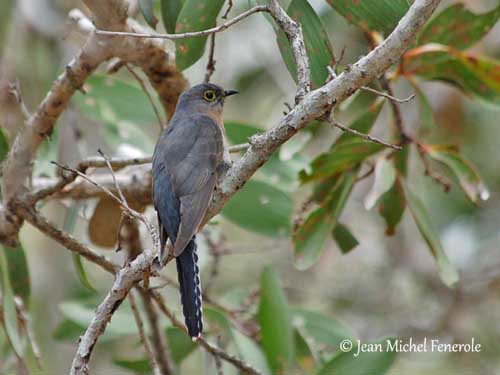
Fan-tailed Cuckoo
Cacomantis flabelliformis
They mainly forage in trees and bushes, but they also come to the ground where they hop while searching for food. Some of them forage in tree canopy, and others take their preys from leaves and branches within the foliage.
They occasionally may join mixed-species foraging flocks, as the members of genus Chrysococcyx are doing.
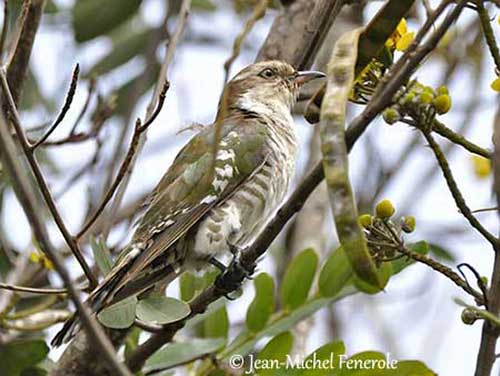
Chrysococcyx caprius
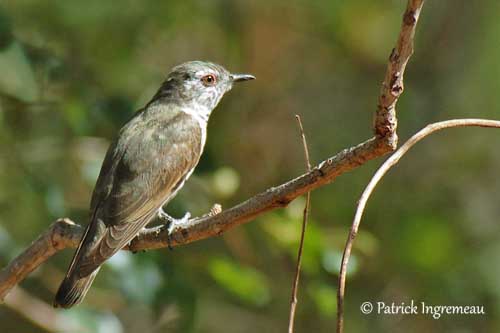
Little Bronze Cuckoo
Chrysococcyx minutillus
The members of genera Caliechthrus and Microdynamis feed also on fruits. The Asian Koël (Eudynamys scolopaceus) feeds mainly from several plant species, few insects but also flower nectar.
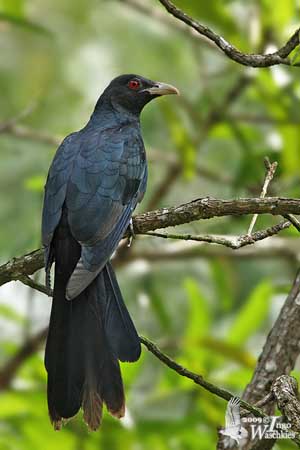
Eudynamys scolopaceus
The Channel-billed Cuckoo (Scythrops novaehollandiae) is the largest brood-parasite cuckoo, and it has a huge bill. This one feeds on fruits and especially figs, and some insects. The young hosted by crows are often fed with carrion.
All these species are brood-parasitic cuckoos which lay their eggs in nests of other bird species. Before the laying, the female cuckoo which usually has cryptic plumage, detects and observes the future hosts, and may also visit the nest.
While the hosts are away from the nest for feeding, the female cuckoo lays her egg into their nest and often leaves it with a host’s egg in the bill. She will eat this egg later.
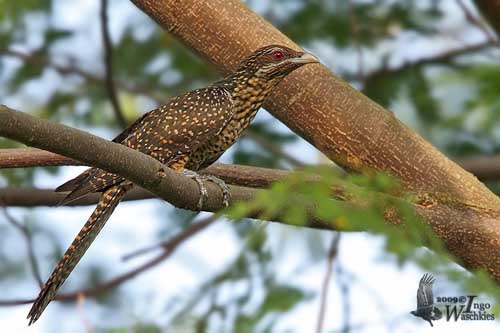
Eudynamys scolopaceus
Usually, the cuckoo’s eggs are very similar to those of the chosen hosts. Later, when the young cuckoo hatches, it rejects the host’s eggs or chicks from the nest, and monopolises the parent care and the food. It grows rapidly but it still depends on its foster parents for several days or weeks after hatching, from 17-20 days to 50-60 days.
The parasitized bird species are numerous, from small passerines to crows. Each species feeds the young cuckoo with the food usually given to a complete clutch.
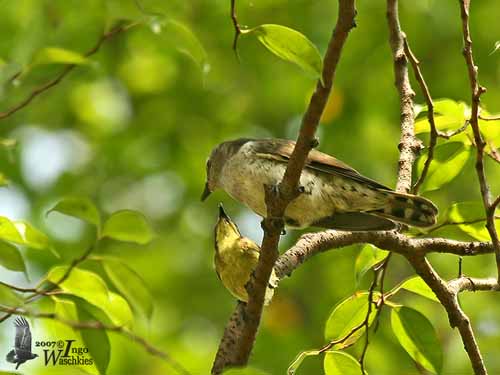
Little Bronze Cuckoo
Chrysococcyx minutillus
Fed by a Golden-bellied Gerygone(Gerygone sulphurea)
The young cuckoo rejects the eggs of the small birds, but it can be reared with the host’s chicks in large species such as Corvidae.
The host nests are variable in shapes, from typical cup-shaped to domed nest. According to the shape, the female cuckoo lays her eggs crouched on the nest, from the rim, or perched above the cup. When the nest is dome-shaped, she lays her egg without entering completely the nest.
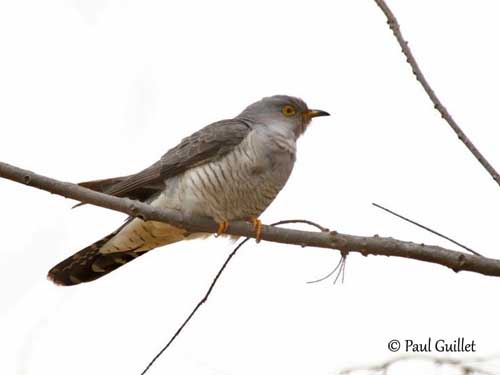
Cuculus canorus
The hosts often mob the cuckoos by flying at them from above, hitting them and calling loudly. They also may reject the cuckoo’s eggs, but only occasionally.
Cuckoos have distinctive vocalisations and can often be identified only by their calls.
They call to advertise the occupation of the territory and to attract their mates. During the breeding season, they call repeatedly and all day long.
SOME SOUNDS BY XENO-CANTO
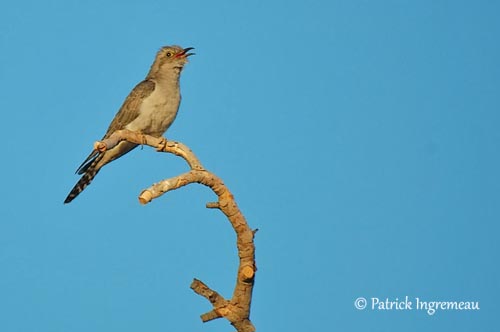
Pallid Cuckoo
cacomantis pallidus
Numerous species perform aerial displays and courtship feeding. The Diederik Cuckoo performs its “caterpillar call” associated with courtship displays.
In the same way, the Great Spotted Cuckoo offers a caterpillar to the female while mating.
Several species of Old World parasitic cuckoos display with fanned and raised tail, in order to expose the tail pattern.
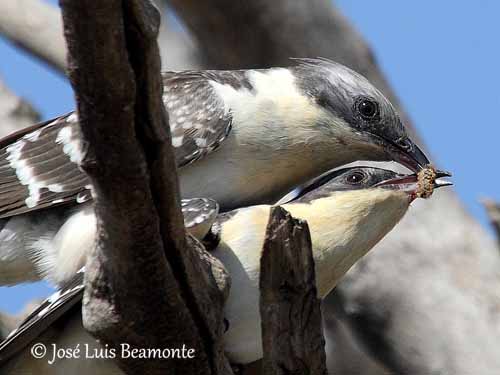
Clamator glandarius
The brood-parasitic cuckoos migrate over long distances. They have fast and direct flight. Their movements coincide not only with the breeding season of their hosts, but also with the emergence of their favourite food sources, the caterpillars.
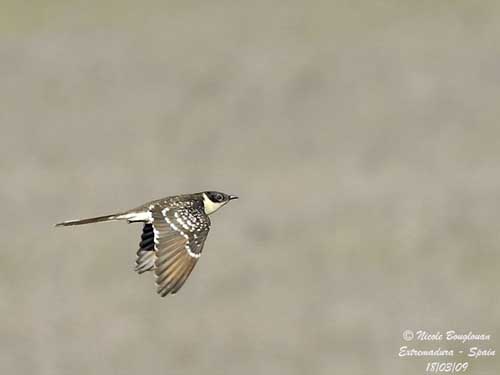
Clamator glandarius
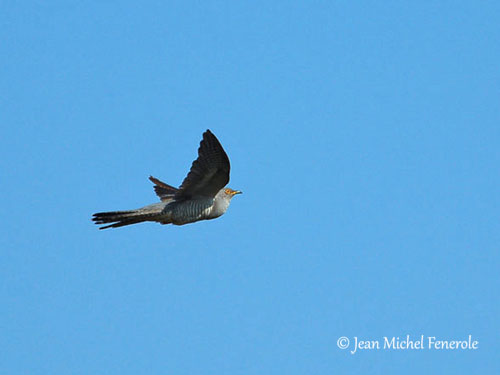
The African species are resident or intra-African migrants. The Common Cuckoo is migratory in the northern parts of the range, moving southwards and wintering in Africa, India, SE Asia and Philippines.
Usually, in numerous species, the northern populations move southwards for wintering in warmer regions.
Cuculus canorus
The Pallid Cuckoo (Cacomantis pallidus) from Australia, may be resident, migratory or with erratic movements in most of Australia. This species is common in its range.
The cuckoos of genus Chrysococcyx have unknown movements, and mainly in SE Asia.
The Old World parasitic cuckoos are usually uncommon, but these birds are more often heard than seen, making difficult to know about their numbers.
The African species are relatively common in suitable habitat.
They are vulnerable to deforestation and degradation of their habitat throughout the range.
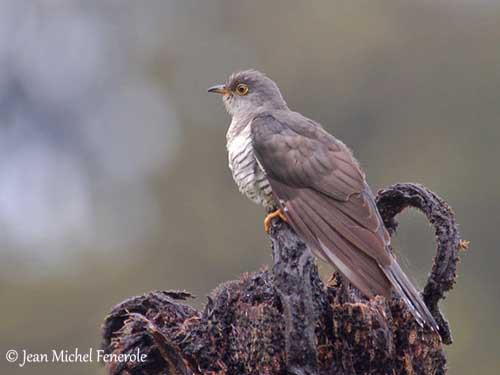
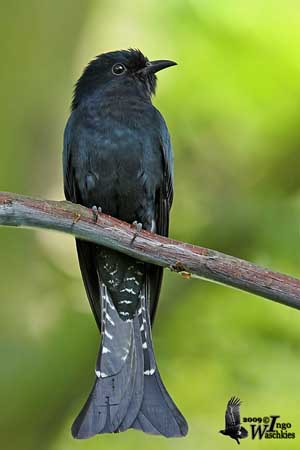
Cuculus rochii
Square-tailed Dro,ngo-Cuckoo
Surniculus lugubris